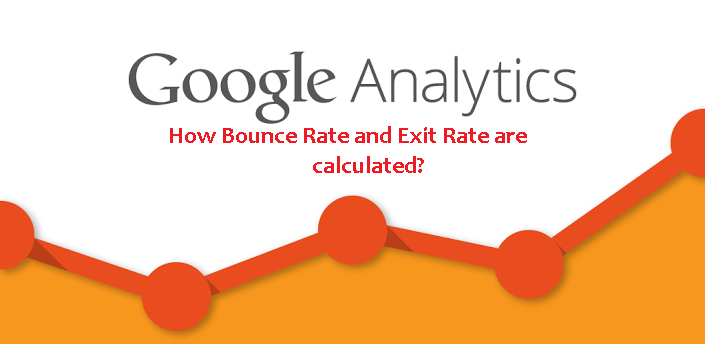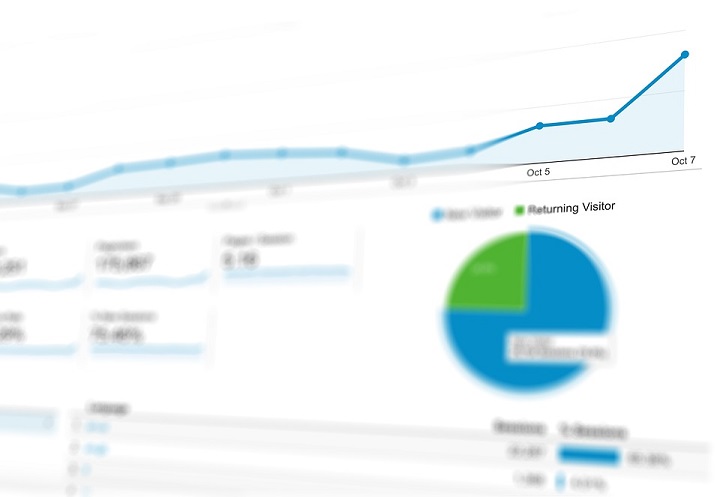If you are using Google Analytics for your website to measure traffic and other statistics, it is likely that you are familiar with the terms like bounce rate and exit rate. But do you know how the bounce rate and exit rate are calculated? What are actually these terms mean and important to look?
Here, let’s see what bounce rate and exit rate are and how they are calculated in Google Analytics:
What is Bounce Rate?
It is the percentage of single-page session or percentage of visitors who enter to the website and then exit rather than continuing on to view other pages on the site.
Bounce rate is always one-page session/visit. Your website or web page bounce rate may be a significant factor in Google ranking. If this is high, it means the page doesn’t satisfy the user or visitor’s intent and this could end up with the poor ranking in Google search. Here are few excellent guides that can help you reduce your site’s bounce rate:
http://mashable.com/2013/11/22/bounce-rate-metrics/
https://support.google.com/analytics/answer/1009409?hl=en
http://www.searchenginejournal.com/reduce-sites-bounce-rate/111066/
Bounce Rate Calculation:
Let’s simplify this with an equation:
| Bounce Rate Formula | Description | Type |
|---|---|---|
| Rb = Tv/Te | Rb is bounce rate Tv is total no of visits viewing one page only Te is total no of entries from that page. | Percent |
Let’s take an example (as given by Google):
Monday: Page B > Page A > Page C
Tuesday: Page B > Exit
Wednesday: Page A > Page C > Page B
Thursday: Page C > Exit
Friday: Page B > Page C > Page A
Bounce rate for Page B: 1/3 = 33%
Because one-page visit on Tuesday is leading to exit and total 3 entries from Page B – Monday, Tuesday, and Friday.
Bounce rate for Page A: 0/1= 0%
Because zero page visit entry which is on Wednesday and this is not leading to the exit.
Bounce rate for Page C: 1/1= 100%
Because one-page visit on Thursday is leading to exit and is the one and only one entry page.
What is Exit Rate?
Exit rate is the percentage of visitors who left your site from that page. Simply put, every visitor’s session comes to an end sometimes. The page that user visits last in his session is called ‘exit’ page which leads to exit rate.
Exit rate may have for all page views to the page i.e. exits can also be bounces.
Like bounce rate, high exit rate also not good for your website, but it depends on other things. For example, in a paginated blog post, the last page will have high exit rate. Other pages that have high exit rate may include a thank you page, email subscription page or checkout confirmation page in an e-commerce site. This can be because of relative navigation context and other user experience metrics.
Exit Rate Calculation:
The equation for exit rate calculation is:
| Exit Rate Formula | Description | Type |
|---|---|---|
| Re = Te/Tv | Re is Exit rate Tv total no. of visits to the page Te total no. of exit from the page | Percent |
Let’s take the previous example,
Monday: Page B > Page A > Page C
Tuesday: Page B > Exit
Wednesday: Page A > Page C > Page B
Thursday: Page C > Exit
Friday: Page B > Page C > Page A
Exit rate for Page A: 1/3 =33%
Because Exit from Page A is only on Friday and total visits for Page A are three – Monday, Wednesday, and Friday.
Exit rate for Page B: 2/4 = 50%
Because Exit from Page B are on Tuesday and Wednesday and total visits are four – Monday, Tuesday, Wednesday and Friday.
Exit rate for Page C: 2/4 =50%
Because Exit from Page Care on Monday and Thursday and total visits are four – Monday, Wednesday, Thursday, Friday.
Hope you’ve got some idea of exit rate and bounce rate – their meaning, importance and calculation. Have something to add? Please share in comment.


 How to Ensure Your WordPress Blog is Safe and Secure
How to Ensure Your WordPress Blog is Safe and Secure
Wow! your article is so nice, thanks for sharing this wonderful information for us. Really bounce rate and exit rate is very important for every website. I have got a lot of information about this article, really it will help me a lot. keep on updating